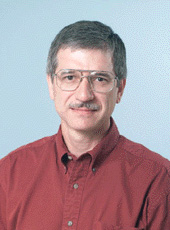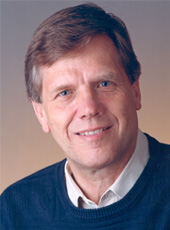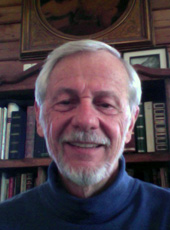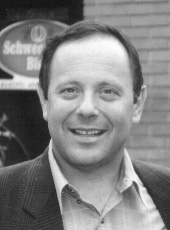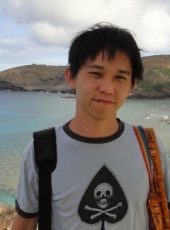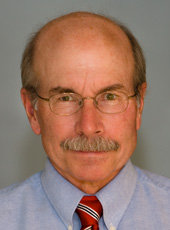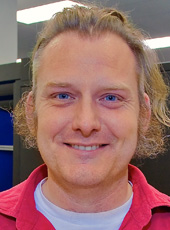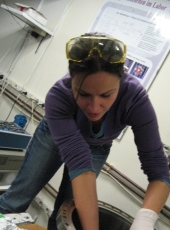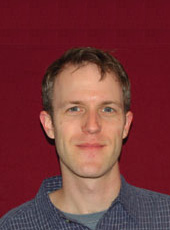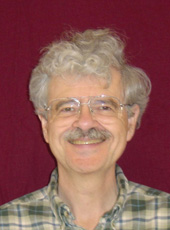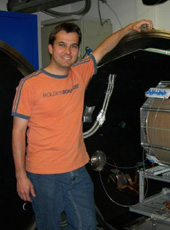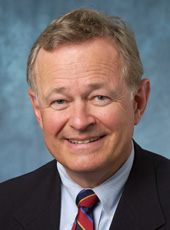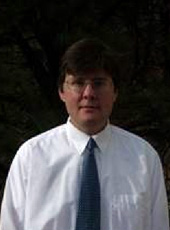People & Partners
Dave Brain
Dave is interested in the role that charged particles and magnetic fields play in the evolution of planets, in the evolution of planetary atmospheres, and in plasma processes near small-scale magnetic fields. He primarily uses spacecraft observations in his research, and couples observations with models. He is actively involved in research efforts for Mars, Venus, and the Moon. As part of the CCLDAS team, he is relating spacecraft observations of the lunar exosphere and crustal fields made by ARTEMIS to the ongoing laboratory and theoretical work at CU-Boulder.
Dave received a bachelor’s degree in Physics and Mathematics from Rice University in 1995, and master’s and doctoral degrees from CU-Boulder in Planetary Science in 1997 and 2002, respectively. From 2003-2011, he was a postdoctoral and then research scientist at the Space Sciences Laboratory at the University of California at Berkeley. In fall 2011, he became an assistant professor in the Astrophysical and Planetary Science Department at CU-Boulder.
Mark Cintala
Mark received his bachelor’s degree in Physics from the University of Bridgeport in 1974 and a master’s degree in Geological Sciences from Brown University in 1976. He received his doctorate in Geological Sciences, specializing in the role of planetary variables in impact cratering processes, from Brown University in 1980, and remained in the Geological Sciences Department under a postdoctoral fellowship until late 1981.
He was a National Research Council postdoctoral research fellowship at the NASA Johnson Space Center (JSC) from 1981-1983. He then served as a postdoctoral fellow at the Lunar and Planetary Institute until 1984, when he became a space scientist at JSC. He is the manager of the Experimental Impact Laboratory in the Astromaterials Research and Exploration Science Directorate.
Andrew Collette
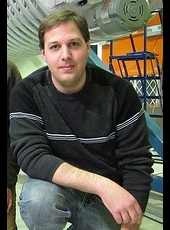 Andrew graduated with a bachelor’s degree in Physics from the University of Rochester in 2004. After that, he did his graduate work on laser-produced plasmas at the UCLA Basic Plasma Science Facility under Walter Gekelman, receiving his doctoral degree in 2010. Andrew started at CCLDAS in July of 2010 and is working on plasma and gas generation by dust impacts at the CCLDAS dust accelerator facility, along with instrument development.
Andrew graduated with a bachelor’s degree in Physics from the University of Rochester in 2004. After that, he did his graduate work on laser-produced plasmas at the UCLA Basic Plasma Science Facility under Walter Gekelman, receiving his doctoral degree in 2010. Andrew started at CCLDAS in July of 2010 and is working on plasma and gas generation by dust impacts at the CCLDAS dust accelerator facility, along with instrument development.
Keith Drake
Keith received his master’s degree in Physics from CU-Boulder. He currently operates as staff scientist for CCLDAS and several other lunar dust and interstellar dust experiments, including dust telescopes and dust impact ionization mass spectrometers.
Eberhard Grün
Eberhard studied Physics at the University of Heidelberg and received a doctoral degree in 1970. He was employed as a scientist at the Max-Planck-Institute for Nuclear Physics in Heidelberg until his retirement in 2007, and is now an emeritus scientist at that institution. He was also a lecturer in Astronomy and Physics at the University of Heidelberg and spent sabbaticals at NASA’s Goddard Space Flight Center, NASA’s Ames Research Center, NASA’s Jet Propulsion Laboratory, and the Lunar and Planetary Institute in Houston. From 2000-2007, he was a researcher at the Hawaii Institute of Geophysics and Planetology at the University of Hawaii in Honolulu. In 2007, he became a research associate at the CU-Boulder Laboratory for Atmospheric and Space Physics (LASP).
Eberhard’s fields of interest are planetary physics and astronomy, laboratory study of impact processes, development of space instrumentation for detection and analysis of extraterrestrial particulates, and analysis of data from spaceborne experiments and astronomical observations. He is involved in dust measurements on the Helios, Galileo, Ulysses, Cassini, Giotto, Nozomi, the Infrared Space Observatory (ISO), Rosetta, New Horizons, and Bepi Colombo missions. He observed comets at ground-based observatories with the ISO, the Hubble Space Telescope, and the Spitzer Space Telescope.
Eberhard received several NASA and ESA awards, the asteroid 1981 EY20 was named (4240) “Gruen” after him, and he is a Fellow of the American Geophysical Union and Foreign Associate of the Royal Astronomical Society. Since 2001, he has received the Kuiper Prize of the Division for Planetary Sciences of the American Astronomical Society; the David Bates Medal of the European Geophysical Society; and the Space Science Award of COSPAR.
Richard Hodges
Mihály Horányi
Mihály received a master’s degree in nuclear physics in 1980 and a doctorate in space physics in 1982, both at the Loránd Eötvös University in Budapest, Hungary. He held research positions at the Central Research Institute for Physics in Budapest from 1982-1984, at the University of Michigan in 1985, at Florida State University from 1985-1989, and at the University of Arizona from 1989-1992. He joined the CU-Boulder Laboratory for Atmospheric and Space Physics (LASP) in 1992 and the CU-Boulder Physics Department in 1999. His research interests include theoretical and experimental investigations of space and laboratory dusty plasmas, electrodynamic processes and their roles in the origin and evolution of the solar system, and the development of space instrumentation.
Mihály is the author of over 170 scientific papers and a fellow of both the American Physical Society (APS) and the American Geophysical Union (AGU).
Hsiang-Wen Hsu
Hsiang-Wen (Sean) Hsu received his Bachelor degree in Earth Science from the National Taiwan Normal University. He was introduced to the dust science by Prof. Wing Ip during his Master degree study in Astrophysics at the National Central University in Taiwan. After that he started his PhD works with Dr. Sascha Kempf and Dr. Mario Trieloff at the Max-Planck Institute for Nuclear Physics in Heidelberg, Germany and received his PhD degree in 2010. He became a research associate at LASP, CU Boulder working with Prof. Mihály Horányi in November 2010.
His works mainly focus on the charging and the dynamics modeling of Saturnian dust. One of his research interests is to explore the role of dust in planetary systems and the prospect of using dust as a probe to study dusty systems in the universe.
Mark Lankton
Mark has more than 25 years of engineering and management experience, and has led and made technical contributions to many successful space-based instrument programs. He is currently the project manager for the Lunar Dust EXperiment (LDEX) on the Lunar Atmosphere and Dust Environment (LADEE) mission. He was previously the project manager for the Cloud Imaging and Particle Size (CIPS) instrument on the Aeronomy of Ice in the Mesosphere (AIM) mission, the Cosmic Dust Experiment (CDE) for AIM, the Student Dust Counter (SDC) for New Horizons, the Mercury Atmospheric and Surface Composition Spectrometer (MASCS) for the MESSENGER mission to Mercury, and the Mechanics of Granular Materials (MGM) Space Shuttle experiment in 1996, 1998, and 2003.
Mark has also served as the flight software group manager at the CU-Boulder Laboratory for Atmospheric and Space Physics (LASP) from 1977-2003. He was a software cognizant engineer for the flight microprocessor software for the TIMED/SEE instrument, and software engineer for the Ultraviolet Imaging Spectrograph (UVIS) instrument for the Cassini mission to Saturn.
Peter Messmer
Peter received his master’s and doctoral degrees in Physics from the Swiss Federal Institute of Technology (ETH Zurich) in 1997 and 2001, respectively. Peter’s research interests are in computational plasma physics and parallel computing, and his physics research includes basic instabilities in space plasmas to photonic bandgap structures and novel particle acceleration concepts via laser-plasma interaction.
Since joining Tech-X in 2002, he has been working on the parallel plasma simulation framework, VORPAL, both implementing new models and applying it to various physics problems. His further research involves investigations of novel computer architectures for accelerating scientific computing.
Anna Mocker
Tobin Munsat
Tobin received a bachelor’s degree in Physics from the University of North Carolina in 1994, and master’s and doctoral degrees in Plasma Physics from Princeton University in 1996 and 2001, respectively. Upon graduation, he was awarded the Department of Energy Fusion Energy Postdoctoral Research Fellowship. Tobin continued at Princeton as an associate research physicist, and then a staff research physicist. In 2004, he became an assistant professor in the Physics Department at CU-Boulder, where he is now the associate director of the Center for Integrated Plasma Studies. In 2005, he won a Department of Energy Plasma Physics Junior Faculty Development Award.
Tobin is the author of over 45 scientific papers in the areas of plasma diagnostics, turbulence and transport, radio frequency techniques, and plasma material interactions, and is a member of the American Physical Society .
W.K. (Bill) Peterson
Bill earned a bachelor’s degree with honors in 1964 in Engineering Physics and a doctorate in Physics in 1971, both from CU-Boulder. He later completed postdoctoral studies at the Deutches Electronen-Synchrotron in Hamburg, Germany, from 1971-1973 and at the Johns Hopkins University, in Baltimore, Maryland, from 1973-1977.
Bill began his career as a research scientist at Lockheed Martin’s Space Physics Laboratory in Palo Alto, California, where he spent 24 years. In 2002, he became a geospace sciences discipline scientist at NASA Headquarters in Washington, D.C. In addition, he acted as principal investigator for the NASA Toroidal Imaging Mass-Angle Spectrograph instrument on the Polar spacecraft and on the Combined Release and Radiation Effects Satellite program (CRRES), and was co-investigator on several mass spectrometer investigations, including the NASA Dynamics Explorer; the Active Magnetospheric Particle Tracer Explorers (AMPTE); the Fast Auroral Snapshot Explorer (FAST); and the International Solar Terrestrial Physics Polar satellite program. Bill was also the secretary of the Electronic Geophysical Year.
Bill’s interests include obtaining and using observations from ground and space-based instruments to characterize, model, and test the theories that attempt to describe Earth’s plasma environment. He has written more than 200 publications on the subjects of atmospheric photoelectrons, atomic collision physics, polarized electrons, composition and dynamics of the mid and high altitude magnetospheric and auroral plasma, ion acceleration processes, image processing, and data policy.
Scott Robertson
Scott is an experimental plasma physicist and a professor in the Physics Department at CU-Boulder. Scott’s researches dusty plasmas in the laboratory, in the ionosphere, and in space. His laboratory experiments have been directed at understanding the physics of dust on the lunar surface, including photoelectric, triboelectric, and plasma charging of dust that is either suspended electrostatically or resting on surfaces. Results of these experiments include measurements of the charge on individual dust particles and images of simulated lunar dust levitated above and moving on surfaces. In the ionosphere, the dust is meteoritic smoke particles that can be the nucleation sites for noctilucent clouds that form in the polar summer. Scott has also developed charged dust detectors and mass analyzers that have flown on numerous rockets to find the charge residing on these particles.
Alan Stern
Alan received master’s degrees in Aerospace Engineering and Planetary Atmospheres in 1980 and 1981, respectively, and a doctorate in Astrophysics in 1989 from CU-Boulder. He held a research position at the Center for Astrophysics and Space Astronomy at CU-Boulder in 1990. Alan began the planetary group at the Southwest Research Institute (SwRI) in 1991, of which he became the executive director in 2003.
He has been the principal investigator of eight spectroscopy and imaging instruments and the New Horizons mission. In 2007-2008, Alan was the associate administrator responsible for all of NASA’s Earth and space science programs. His research interests include the atmospheres of the moon; comets; planetary satellites; the origin of the solar system; the Kuiper Belt and Oort Cloud; and the development of space instrumentation.
Alan is an author of more than 200 scientific papers and is a fellow of the American Association for the Advancement of Science and the International Astronautical Federation.
Zoltan Sternovsky
Zoltan’s interests are in instrument development for sounding rockets and satellites, experimental research in hypervelocity dust impact plasmas, and laboratory plasma physics. He has extensive laboratory experience studying dust charging processes in the laboratory, dusty plasmas research, plasma diagnostics using Langmuir probes, and designing and building scientific apparatuses. He was the instrument scientist on a sounding rocket mission launched in August 2007 that measured the density of nanometer-sized, charged smoke particles in the mesosphere.
Zoltan is currently involved in the development of several in-situ dust instruments, including the Lunar Dust EXperiment (LDEX). The satellite with this instrument will orbit the Moon and measure dust lofted from the lunar surface to high altitudes. Zoltan has long studied the near-surface lunar environment, including the experimental study of charging lunar dust samples, development of diagnostic techniques for the photoelectron sheath generated by solar UV, and its modeling.
Stein Sture
Stein is the vice chancellor for research at CU-Boulder. He has held the position since 2007, and on an interim basis between October 1, 2005 and July 15, 2006. He is also the Huber and Helen Croft Endowed Professor in the College of Engineering and Applied Science. He has been a faculty member at CU-Boulder since 1980 and served as the associate dean for research in the College of Engineering and Applied Science from 2002-2005. He served as department chair in the Department of Civil, Environmental, and Architectural Engineering for nearly six years (1990-1991; 1994-1998). Between 1976 and 1980, he was on the faculty at Virginia Polytechnic Institute and State University.
Stein received his education in public schools in Oslo, Norway, a degree in engineering mechanics at the Schous Institute of Technology, in Oslo, and three degrees at CU-Boulder, including a doctoral degree attained in 1976. His fields of expertise are in the areas of experimental and analytical modeling in solid mechanics, geomechanics, computational geotechnics, and geotechnical engineering. He has advised and graduated 34 doctoral and 45 master’s thesis students. He has authored or co-authored over 290 peer-reviewed publications and 65 research reports. Between 1985 and 1986, he was a visiting professor at the Norwegian University of Science and Technology in Trondheim, and the University of Oxford, United Kingdom, where he is a Jenkin Fellow in Engineering Sciences.
Stein’s contributions are in the areas of constitutive modeling of cementitious composites and geomaterials; nonlinear analysis of soil-structure interaction systems including earthquake-induced soil liquefaction mechanisms; modeling of bifurcation instabilities and localized deformations in single phase and fluid saturated porous media; development of explicit and implicit integration techniques for elastic-plastic pressure sensitive materials; large deformation analysis; and fracture mechanics related to weakly cemented materials. Stein has presented more than 40 plenary or keynote lectures at national and international conferences, and more than 50 invited lectures at universities, government laboratories, and industrial institutions. He has served as a consultant to nearly 30 public and private organizations including Lockheed-Martin, Martin-Marietta, NASA Marshall Space Flight Center, Exxon Production Research Co., Shell Development Co., the Federal Aviation Administration (FAA), Structural Reliability Technology, Inc., URS Woodward-Clyde Consultants, United Nations Development Program, and Veritas a/s, among others.
His service at CU-Boulder includes serving as vice chair of Boulder Faculty Assembly from 2003-2005, and chair of the Budget and Planning Committee from 2001-2003. His external service includes editorships of three major journals and service on various editorial boards. He has served as organizer and general chair of seven major national and international scientific and engineering conferences. Stein has organized 12 national-level workshops and short courses and has acted as the elected national director of the American Society of Civil Engineers from 2003-2006; the chair of the Engineering Mechanics Division, Governor Engineering Mechanics Institute, ASCE; and on the Board of Governors of the Geo-Institute of ASCE and the U.S. National Committee for Theoretical and Applied Mechanics from 1997 -2005. He is an elected fellow of the American Society of Civil Engineers and the U.S. Association for Computational Mechanics. He received ASCE’s 1990 Walter Huber Research Prize, the 2000 Richard Torrens Award, the 1992 CU-Boulder College of Engineering and Applied Science’s Research Award, and the 2002 Max Peters Service Award.
Xu Wang
Xu received bachelor’s degree in Electrical Engineering from the University of Electronic Science and Technology in China in 1994, and a doctoral degree in Engineering Physics from the University of Wisconsin at Madison in 2005. That year, he joined the Center for Integrated Plasma Studies at CU-Boulder, where he is now a research associate. His interests include laboratory dusty plasmas, basic plasma physics, and plasma diagnostics.
Xu has conducted several experiments on dust charging and transport in plasmas and photoelectron sheath in laboratory to understand lunar dust dynamics.
Michael A. Weinstein
Mike holds a bachelor’s degree from Colorado State University in mechanical engineering and a master’s in Business Administration from the University of Denver.
After spending eight years in industrial manufacturing and robotic automation systems, Mike started numerous companies involving industrial-scale robotic automation, plasma research, and manufacturing. His current company, Zybek Advanced Products, Inc. (ZAP), has a fully-equipped and staffed CNC machine shop to support research and manufacturing. ZAP also has a full, industrial-scale, remotely-coupled, transferred-arc plasma system that is currently used to manufacture lunar simulant for terrestrial component testing. ZAP currently provides recently patented glass and agglutinates for lunar simulants.


